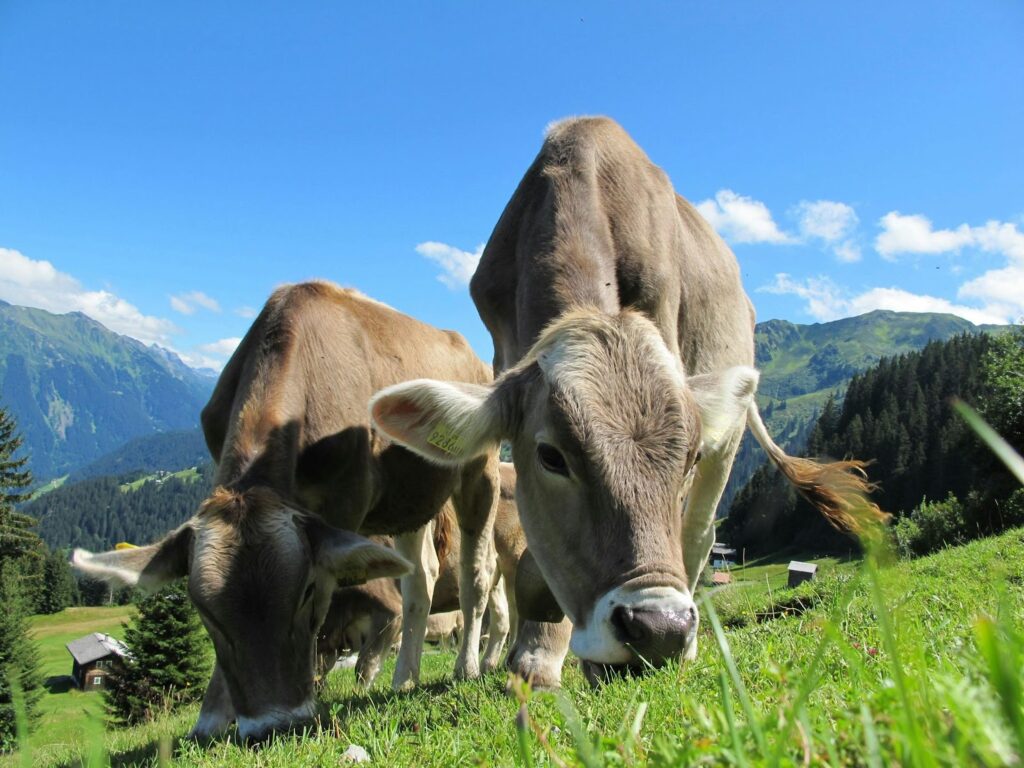
Farming across the USA has had an interesting couple of years. 2022 saw record highs with $183 billion worth of profits reached – an increase of $42.9 billion or 30.7% from 2021.
As the results of the 2023 season roll in, will this year be as profitable? Or are there clear winners and losers among the various farming sectors?
Let’s find out.
In a Nutshell
- Overall, farming net income across the USA will decline by 25.4%.
- Crop cash receipts will decline by 4%.
- Cotton, milk, and eggs will face the biggest losses across the US.
- Vegetables, melons, cattle, calves, and turkeys will be the USA’s biggest winners.
- Colorado has fared well in 2023 and looks forward to good gains and only marginal losses.
- Fruits, nuts, milk, dairy, poultry, and eggs will be Colorado’s biggest winners.
- Colorado’s largest losses will come from food grains and meat livestock.
Farming Outcomes for the USA

According to the US Department of Agriculture (USDA), the net income forecast for US farming is set to decrease by $48 billion or 25.4% – a sharp decline from the previous year.
Where cash receipts are concerned, 2023 will see a decrease of $23 billion or 4.3%.
Here are the projections for each crop or produce type:
- Crop cash receipts will see an overall decrease of $11.2 billion (4%).
- Corn is projected to fall by $8.5 billion (9.6%).
- Soybeans are expected to drop by $5.4 billion (8.6%).
- Cotton will decrease by $1.6 billion (17.8%).
- Wheat receipts will also fall by $0.4 billion (3.1%).
- Fruits and nuts are expected to fall by $0.6 billion (2.3%).
- Milk production faces a large blow, with a decrease of $12.0 billion (20.9%).
- Hog receipts also won’t fare as well, with a decrease of $3.0 billion (9.8%).
- Broiler chickens are also set to fall by $6.5 billion (12.9%).
- Chicken eggs face a big loss of $6.3 billion (32.3%).
The two key drivers for these large reductions in cash receipts are falling prices and lower production quantities. Additionally, widespread drought has been a major problem for livestock farming, which has limited the amount of available pasture lands and resulted in smaller herd sizes.


However, it’s not all bad news. Some farming sectors are set to improve:
- Hay receipts will enjoy an increase of $0.7 billion (7.4%).
- Receipts for cattle, calves, and turkeys are set to increase by a whopping $15.3 billion (17.8%).
- Receipts for vegetables and melons are expected to see an increase of $3.6 billion or 15.9%.
- This increase includes a $0.5 billion increase in potato receipts.
- A $0.1 billion (7.4 %) increase in sugar cane receipts is also expected.
As of 31st August 2023, here’s what the total cash receipts for each farming sector looked like:
| USA | 2022 | 2023 |
| Cotton | $9.2 million | $7.3 million |
| Feed crops | $104.8 million | $93.6 million |
| Food grains | $17.5 million | $16.4 million |
| Fruits and nuts | $27.5 million | $25.9 million |
| Oil crops | $68.1 million | $60.4 million |
| Tobacco | $1.04 million | $1 million |
| Vegetables and melons | $23.1 million | $26 million |
| All other crops | $36.3 million | $36.2 million |
| Dairy products, Milk | $59.2 million | $45.2 million |
| Meat animals | $120.6 million | $129 million |
| Miscellaneous livestock | $7.8 million | $7.7 million |
| Poultry and eggs | $79.6 million | $64.5 million |
The two clear winners are:
- Vegetables and melons
- Meat animals
Where “other” crops and miscellaneous livestock are concerned, we don’t see much of a change from 2022 and could possibly swing into positive numbers once the USDA updates its data with the total cash receipt figures of the 2023 season.
Farming Outcomes for Colorado

In contrast to the USA as a whole, Colorado is projected to excel in 2023. And where the overall figures in some farming sectors are forecast to drop, Colorado will actually gain.
Here’s what we can expect from our Colorado farmers’ cash receipts in 2023:
| Colorado | 2022 | 2023 |
| Feed crops | $1,501,453 | $1,530,145 |
| Food grains | $454,424 | $350,282 |
| Fruits and nuts | $27,151 | $35,068 |
| Oil crops | $12,804 | $12,495 |
| Vegetables and melons | $286,916 | $316,371 |
| All other crops | $616,475 | $567,741 |
| Dairy products, Milk | $1,086,990 | $1,400,778 |
| Meat animals | $4,848,103 | $4,763,890 |
| Miscellaneous livestock | $224,891 | $212,441 |
| Poultry and eggs | $141,284 | $216,776 |
There are several winners to take note of:
- Feed crops will take a slight win over 2022, but not enough to make a vast difference.
- Fruits and nuts will do well with a 29.1% increase over 2022.
- Vegetables and melons (including potatoes) will increase by 10.2%.
- Milk and other dairy products are projected to rise by 28.8%.
- Poultry and eggs are the biggest winners of Colorado’s farming season with an absolutely massive 53.4% increase over 2022.
- Potato farming was a surprising success, with higher yields than expected, despite rising production costs. In San Luis Valley, 23% of potato crops were rated “excellent” and 52% as “good.”
As for the losers? Colorado faces the biggest drop in the food grains sector, with a decrease of 22.9% over last year.
Oil crops also take a slight dip, but this crop has been declining steadily for the past decade. In 2014, oil crops generated over $21,000 in cash receipts and in 2023 it’s less than $12,500.
And with the exception of poultry, milk, and eggs, meat farming will take a slight nosedive, with a 1.73% drop in meat animal production and a 5.53% dip in miscellaneous livestock.
With Success Comes Higher Taxes

Colorado farmers are no doubt starting to celebrate the gains made in 2023. However, with success comes one surefire downside – a potential higher tax bill.
Before tax season rolls around, many farmers look for ways to offset their tax bills. The resulting purchases are generally new vehicles or farm machinery.
However, the figures show that investing in solar energy is far more beneficial in the short and long-term future.
With the current tax credits and incentives on offer, it’s entirely possible to get more than 100% return on investment (ROI) in the first year alone. And with the ongoing energy savings of up to 96%, farmers can enjoy reaping the rewards of solar, no matter what the farming income predictions hold for future years.
To understand more about the benefits of solar compared with a farm machinery investment, check out our in-depth article on the subject.
And if you’re ready to take the plunge and make solar energy your big purchase for 2023, then talk to our team at 8760 Solar.
Providing solar systems to farms and agricultural businesses is our specialty, so don’t hesitate to reach out. To get started, text “READY” to 719 470-0254 or contact us via email: sales@8760solar.com and we’ll get back to you right away.
